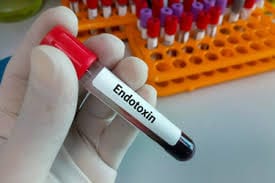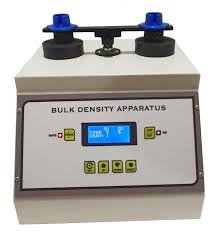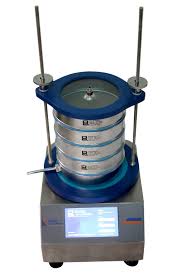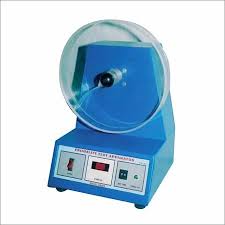|
Getting your Trinity Audio player ready... |
Q4B Annex 4C(R1) Microbiological Examination of Non-Sterile Products: Acceptance Criteria for Pharmaceutical Preparations and Substances for Pharmaceutical Use
1. Introduction: Non-Sterile Products
Non-Sterile Products: This annex outlines the outcomes of the Q4B process related to the microbiological examination of non-sterile products, with a focus on establishing acceptance criteria for pharmaceutical preparations and substances intended for pharmaceutical use. The document’s purpose is to ensure consistency and regulatory alignment across different pharmacopoeial texts used in various regions.
The texts presented in this annex are not mandatory for regulatory compliance; instead, they serve as informational guidelines for stakeholders involved in the development, manufacturing, and testing of non-sterile pharmaceutical products. It is essential to note that these recommendations aim to harmonize microbiological quality standards across global markets. The proposed documents were submitted by the Pharmacopoeial Discussion Group (PDG), a consortium of pharmacopoeial authorities working together to promote international standardization.
2. Q4B Outcome
The International Council for Harmonisation (ICH) Steering Committee, following the review process conducted by the Q4B Expert Working Group (EWG), has formally recommended that the official pharmacopoeial texts, namely:
- European Pharmacopoeia (Ph.Eur.) 5.1.4: “Microbiological Quality of Non-Sterile Pharmaceutical Preparations and Substances for Pharmaceutical Use”
- Japanese Pharmacopoeia (JP) General Information 12: “Microbial Attributes of Non-Sterile Pharmaceutical Products”
- United States Pharmacopeia (USP) <1111>: “Microbiological Attributes of Non-Sterile Pharmaceutical Products”
should be considered interchangeable in the regions governed by the ICH. This recommendation ensures that pharmaceutical companies and regulatory bodies can rely on these texts for microbiological quality assessments, regardless of the specific regional pharmacopoeia they adhere to. The harmonization of these texts fosters consistency in regulatory practices and facilitates international trade of pharmaceutical products.
3. Timing of Annex Implementation
The timeline for the implementation of this annex varies by region. Once the annex is officially incorporated into the regulatory framework of a specific region (as defined at ICH Step 5), the guidelines outlined within it become applicable. As implementation dates may differ across regions, pharmaceutical companies and regulators should remain updated on the official timeline in their respective jurisdictions.
4. Considerations for Implementation
4.1 General Considerations
Pharmaceutical manufacturers and sponsors who wish to adopt the Q4B-evaluated pharmacopoeial texts referenced in Section 2 must follow established regional regulatory mechanisms for notifying authorities about any changes made to existing testing methods. This ensures that any changes related to microbiological examination methods, as part of the transition to the harmonized standards, are properly documented and approved by the relevant regulatory agencies. This process helps maintain compliance with both regional and international standards.
4.2 FDA Considerations
In the United States, the Food and Drug Administration (FDA) recognizes the interchangeable nature of the microbiological examination methods from the pharmacopoeial texts referenced in Section 2 of this annex. However, the FDA may require companies to demonstrate that the chosen testing method is suitable and reliable for the specific material or product under examination. This ensures that the testing methods used meet the necessary quality and safety standards, regardless of the origin of the method. The FDA’s primary concern is that the methods result in accurate and reliable microbiological testing of non-sterile pharmaceutical products.
4.3 EU Considerations
In the European Union, the official monographs of the European Pharmacopoeia (Ph. Eur.) hold mandatory applicability. However, regulatory authorities can accept references to corresponding microbiological texts from other pharmacopoeias, such as those from Japan or the United States, provided they align with the principles set forth in this annex. This acceptance will be valid for marketing authorization applications, renewal processes, or variation applications, as long as the interchangeability condition outlined in the annex is fulfilled. This approach allows companies to demonstrate compliance with the Ph. Eur. Chapter 5.1.4 on microbiological quality using texts from other pharmacopoeias.
4.4 MHLW Considerations
The Ministry of Health, Labour, and Welfare (MHLW) in Japan also accepts the microbiological examination texts referenced in this annex as interchangeable, provided that the implementation follows the requirements detailed in the annex. Once the annex is incorporated into the regulatory framework, the MHLW will issue a formal notification to clarify the implementation details and any specific procedural requirements.
4.5 Health Canada Considerations
In Canada, the referenced pharmacopoeial texts can be used interchangeably as long as they meet the conditions set out in the annex. Health Canada will accept the use of any of the texts cited in Section 2 for microbiological quality testing, which ensures that pharmaceutical companies can apply consistent microbiological standards across different regions. Companies must still ensure that they comply with Canadian regulations regarding the use of these texts in marketing authorization applications or product submissions.
5. References Used for the Q4B Evaluation
The evaluation and harmonization process that led to the creation of this annex was supported by various key documents and resources, which include:
5.1 PDG Stage 5B Sign-Off Document
The PDG Stage 5B sign-off document, specifically from the Japanese Pharmacopoeial Forum, Volume 14, Number 4 (December 2005), played a pivotal role in shaping the recommendations and decisions related to microbiological quality standards for non-sterile pharmaceutical products.
5.2 Pharmacopoeial References for Microbiological Examination
Several pharmacopoeial documents were referenced in the creation of this annex:
- European Pharmacopoeia (Ph. Eur.) 6.3 Edition (January 2009): This edition of the Ph. Eur. included the official section on microbiological quality standards for non-sterile pharmaceutical preparations and substances for pharmaceutical use (reference 01/2009: 50104).
- Japanese Pharmacopoeia (JP): The JP General Information 12 on microbial attributes of non-sterile pharmaceutical products, as published in Supplement I to the Japanese Pharmacopoeia Fifteenth Edition (September 28, 2007), provides a comprehensive set of guidelines for microbiological testing of pharmaceutical products. The English version of this text was published on January 9, 2008.
- United States Pharmacopeia (USP): The USP’s <1111> Microbiological Attributes of Non-Sterile Pharmaceutical Products, as officially recognized in USP 30 (January 2007), offers detailed guidance on microbiological quality standards for non-sterile pharmaceutical preparations.
These references serve as the foundation for the annex, ensuring that the harmonization process is based on credible and widely recognized pharmacopoeial standards across the three major regions.
Conclusion
The harmonization of microbiological examination standards for non-sterile pharmaceutical products, as outlined in this annex, represents a significant step forward in international regulatory cooperation. By recognizing the interchangeability of the microbiological examination texts from the European, Japanese, and United States pharmacopoeias, the Q4B process helps streamline global regulatory practices, ensuring that pharmaceutical manufacturers and authorities can rely on consistent, scientifically validated criteria for microbiological quality testing.
Pharmaceutical companies must stay informed about the specific requirements for their region and ensure that any necessary regulatory notifications or approvals are properly handled when transitioning to the new standards. With this harmonization, the global pharmaceutical industry benefits from greater consistency, efficiency, and clarity, ultimately contributing to the safety and quality of pharmaceutical products worldwide.















